Central nervous system (CNS)
What is the central nervous system simple definition?
The central nervous system(CNS) is a combination of the brain & spinal cord. It is referred to as “central” because it combines information from the whole body & coordinates activity across the whole organism.
Overview of the brain
The nervous system is made up of huge neural networks; signaling within these circuits enables thinking, language, feeling, learning, memory, & all function & sensation. It is well-established that through the plasticity of existing cells our nervous systems can adapt to situations not previously encountered, but it also has been shown that cells (NSCs) are plastic &involved in creating new connections in adaptation & response to injury.
The Nervous System has three specific functions:
Sensory Input – Sensory receptors present in the skin and organs respond to external & internal stimuli by generating nerve impulses that to the central nervous system
Integration – The brain & spinal cord of the Central Nervous System combine & sum up all the data received from the body & send out nerve impulses.
Motor Output – The nerve impulses from the Central Nervous System go to the effectors (muscles & glands). Muscle contractions & gland secretions react to stimuli received by sensory receptors.
The Nervous System is divided into two main divisions.
- Central Nervous System (CNS)
- Peripheral Nervous System (PNS)
Central Nervous System (CNS)
The spinal cord & brain sit in respective cavities
The CNS has two parts: The brain; Spinal Cord
Brain
The brain stem, comprises the medulla, pons, & midbrain
Cerebellum
Diencephalon, with the thalamus & hypothalamus
Cerebral hemispheres (comprised of the cerebral cortex, basal ganglia, white matter, hippocampi & amygdalae). The right & left hemispheres are connected by the corpus callosum which facilitates communication between both sides of the brain. The Hemispheres are then again divided into four lobes.
The Spinal Cord (extension of the CNS).
Neurological Conditions: many neurological conditions affect the CNS. They range dramatically in scope, impact, & nature of the effect. Some conditions lead to progressively impaired movement eg Parkinson’s disease. Huntington chorea. The demyelination in multiple sclerosis can cause acute attacks, & over time, chronic degradation of function. Others may impact cognition such as various dementias. Epilepsy can cause uncontrolled excitation. Headaches often damage the daily function of patients. Traumatic injuries can cause plegia or paresis & may result in a wide range of deficits depending on the location & extent of the lesion.
Neurons
Neurons are cells of the nervous system, located within the grey matter, & responsible for all neurological functions of the brain.
They are any of the impulse-conducting cells that constitute the brain, spinal column, & nerves in vertebrates, consisting of a nucleated cell body with one or more dendrites & a single axon. See the Neurone link for more detailed information
CerebrumBrain function related to anatomy.jpg
The cerebrum consists of two cerebral hemispheres, the right &left hemispheres are connected by the corpus callosum which facilitates communication between both sides of the brain, with each hemisphere in the main connection to the opposite side of the body i.e. the left hemisphere of the cerebrum receives information from the right side of the body resulting in motor control of the right side of the body & inversely.
The hemispheres are then again divided into four lobes;
- Occipital
- Parietal
- Temporal (medial part of which is a series of structures including the Hippocampus)
- Frontal
Cerebral Cortex
The outer layer of the cerebral hemisphere is called the cerebral cortex. This is interconnected via pathways that run sub-cortically. It is these connections as well as the connections from the cerebral cortex to the brainstem, spinal cord & nuclei deep within the cerebral hemisphere that form the white matter of the cerebral hemisphere. The deep nuclei contain the structures such as the basal ganglia & the thalamus.
Basal Ganglia
The “basal ganglia” refers to the group of subcortical nuclei within the brain responsible primarily for motor control,& other roles such as motor learning, executive functions, & emotional behaviors, & play an important role in reward & reinforcement, addictive behaviors & habit formation. a disease that affects this area include Huntington”s disease and Parkinson’s disease
The Hypothalamus
HypothalamusThe hypothalamus is an organ central to many autonomous functions of the human body, particularly the regulation of homeostasis. It has a significantly large efferent output to the ANS & has a highly significant role in the control of pituitary endocrine function.
The hypothalamus lies on both sides of the 3rd ventricle, below the thalamus, & between the optic chiasm & the midbrain. It collects a large input from limbic structures.
Meninges
The CNS is circumscribed within the skull & vertebral column. These structures are separated by a series of membranes called the Meninges. The Pia Mater is separated from the fine arachnoid membrane by the subarachnoid space, which is then in turn separated from the Dura mater by the Sub-dural space
Neuroglial Cells.
Even though there are about 86-100 billion neurons in the brain, there are about the same number of glial cells in the brain. Glial cells, or neuroglia, are cells that surround the neurons of the central nervous system embedded between them, providing both structural & physiological support.
There are four main divisions of neuroglial cells within the CNS.
- Astrocytes.
- Oligodendrocytes
- Ependymal cells
- Microglial Cells
- And in the PNS:
Schwann Cell:
Found only in the PNS. answerable for the myelination of the peripheral nerves by wrapping the cell around the axon. There are multiple layers of Schwann cell membrane wrapped around the nerve. One Schwann cell wraps around one axon & provides myelin for one internode. They are important for the regeneration of damaged peripheral axons.
Limbic System
The limbic system refers to a number of areas within the brain present mainly on the medial side of the temporal lobe.
Limbic
The limbic system provides high-level filtering of sensory information. The main outflow of the limbic system is to the prefrontal cortex & the hypothalamus as well as to cortical areas. It appears to have a role in attaching behavioral significance & response to a given stimulus.
Damage to this area has a profound impact on emotional responses.
Long-term potentiation (LTP) is the increase in the strength of synaptic transmission with repetitive use, it can be seen to be affected in the hippocampus (primarily involved with memory) & is thought to be important for memory achievement.
Brainstem
Brainstem
The Brainstem lies at the base of the brain & the top of the spinal cord. It is the structure that connects the cerebrum of the brain to the spinal cord & cerebellum. It is composed of 3 sections in descending order: the midbrain, pons, & medulla oblongata. It is responsible for many vital functions of life, such as breathing, consciousness, blood pressure, heart rate,& sleep.
Brain regions
Cerebellum: mostly involved in precise motor control, but also in language & attention. If the cerebellum is damaged, the primary symptom is deranged motor control, known as ataxia.
Broca’s area: this small area on the left side of the brain (sometimes on the right in left-handed individuals) is valuable in language processing. When damaged, a different find it difficult to speak but can still understand speech. Stuttering is sometimes associated with trusted Sources with an underactive Broca’s area.
Corpus callosum: a broad band of nerve fibers that connects the left & right hemispheres. It is the largest white matter structure in the brain & allows the two hemispheres to communicate. Dyslexic children have smaller corpus callosum; left-handed people, ambidextrous people, and musicians typically have larger ones.
Medulla oblongata: extending below the skull, it is involved in involuntary functions, such as vomiting, breathing, sneezing, & maintaining the correct blood pressure.
Hypothalamus: sitting just above the brain stem & roughly the size of an almond, the hypothalamus secretes a number of neurohormones & influences body temperature control, thirst, & hunger.
Thalamus: positioned in the center of the brain, the thalamus receives sensory & motor input & relays it to the rest of the cerebral cortex. It is involved in the regulation of consciousness, sleep, awareness, & alertness.
Amygdala: two almond-shaped nuclei extensive within the temporal lobe. They are involved in decision-making, memory, & emotional responses; particularly negative emotions.
White & gray matter
The CNS can be roughly divided into white & gray matter. As a very general rule, the brain consists of an outer cortex of gray matter & an inner area housing tracts of white matter.
Both types of tissue contain glial cells, which protect & support neurons. White matter mostly consists of axons (nerve projections) & oligodendrocytes — a type of glial cell — whereas gray matter consists predominantly of neurons.
Central glial cells
Also called neuroglia, glial cells are also called support cells for neurons.
Without glial cells, developing nerves often lose their way & struggle to form functioning synapses.
Glial cells are found in both the CNS & PNS but each system has different types. These are brief descriptions of the CNS glial cell types:
Astrocytes: these cells have numerous projections & anchor neurons to their blood supply. They also regulate the local environment by removing excess ions & recycling neurotransmitters.
Oligodendrocytes: responsible for creating the myelin sheath — this thin layer coats nerve cells, allowing them to send signals quickly & efficiently.
Ependymal cells: lining the spinal cord & the brain’s ventricles (fluid-filled spaces), these create & secrete cerebrospinal fluid (CSF) &keep it circulating using their whip-like cilia
Radial glia: serve as scaffolding for new nerve cells during the creation of the embryo’s nervous system.
Cranial nerves
The cranial nerves are 12 pairs of nerves that arise directly from the brain & pass through holes in the skull rather than traveling along the spinal cord. These nerves collect & send information between the brain & parts of the body – mostly the neck & head.
Of these 12 pairs, the olfactory & optic nerves arise from the forebrain & are observed as part of the central nervous system:
Olfactory nerves (cranial nerve I): transmit information concerning odors from the upper section of the nasal cavity to the olfactory bulbs on the base of the brain.
Optic nerves (cranial nerve II): transfer visual information from the retina to the primary visual nuclei of the brain. one optic nerve consists of around 1.7 million nerve fibers.
Central nervous system diseases
given Below are the major causes of disorders that affect the CNS:
Trauma: depending on the site of the injury, symptoms can differ widely from paralysis to mood disorders.
Infections: some micro-organisms & viruses can invade the CNS; these include fungi, such as cryptococcal meningitis; protozoa, including malaria; bacteria, as is the case with Hansen’s disease (leprosy), or viruses.
Degeneration: some times, the spinal cord or brain can degenerate. One example is Parkinson’s disease which involves the gradual degeneration of dopamine-constructing cells in the basal ganglia.
Structural defects: the most common examples are birth defects; including anencephaly, where parts of the skull, brain, & scalp are missing at birth.
Tumors: both cancerous & noncancerous tumors can affect parts of the central nervous system. Both types can cause damage & yield an array of symptoms depending on where they develop.
Autoimmune disorders: in some cases, an individual’s immune system can produce an attack on healthy cells. For instance, acute disseminated encephalomyelitis is characterized by an immune response against the brain & spinal cord, attacking myelin (the nerves’ insulation) & therefore, destroying white matter.
Stroke: a stroke is an interruption of blood supply to the brain; the resulting inadequacy of oxygen causes tissue to die in the affected area.
Difference between the Central nervous system & peripheral nervous system
The term peripheral nervous system (PNS) refers to any part of the nervous system that lies outside of the brain & spinal cord. The CNS is split from the peripheral nervous system, although the two systems are interconnected.
There are a number of differences between the CNS & PNS; one difference is the size of the cells. The nerve axons of the CNS — the slender protuberance of nerve cells that carry impulses — are much shorter. PNS nerve axons can be up to 1 meter long (for instance, the nerve that activates the big toe) whereas, enclosed in the CNS, they are rarely longer than a few millimeters.
Another major difference between the CNS & PNS involves regeneration (regrowth of cells). Much of the PNS has the capability to regenerate; if a nerve in your finger is severed, it can regrow. The CNS, however, does not have this capability.
What is the autonomic nervous system?
The autonomic nervous system is a complex network of cells that command the body’s internal state. It regulates & supports many different internal processes, often outside of a person’s conscious awareness.
The nervous system is a collection of cells that send & receive electrical &chemical signals throughout the body.
The nervous system involves two main parts:
The central nervous system: This embrace the brain & spinal cord.
The peripheral nervous system: This accommodates all the neurons outside of the central nervous system.
The Autonomic nervous system is a portion of the peripheral nervous system. It is a collection of neurons that influence the activity of many different organs, including the stomach, heart, &lungs.
Within the Autonomic nervous system, there are two subsystems that have mostly opposing effects:
The sympathetic nervous system (SNS): Neurons within the SNS generally prepare the body to react to something in its environment. For example, the Sympathetic nervous system may increase heart rate to prepare a person to escape from danger.
The parasympathetic nervous system (PNS): Parasympathetic neurons mostly regulate body functions when a person is at rest.
Function
The nervous system maintains the internal environment of the body. It is essential for maintaining homeostasis.
Homeostasis refers to the relatively stable &balanced conditions inside the body that are necessary to support life. Some of those that homeostasis maintains include:
- body temperature
- blood pressure
- heart rate
- breathing
- metabolism
- blood glucose levels
- blood acidity levels
- water & electrolytes
- digestion
- The ANS receives information from the environment & other parts of the body & regulates the activity of the organs, accordingly.
The Autonomic nervous system is also involved in the following body functions:
- producing bodily fluids, such as sweat
- urination
- sexual responses
- One crucial function of the ANS is to prepare the body for action through the “fight or flight” response.
If the body recognizes a threat in the environment, the sympathetic neurons of the ANS react by:
- increasing heart rate
- widening the airways to make breathing easier
- releasing stored energy
- increasing strength in the muscles
- slowing digestion & other bodily processes that are less important for taking action
- These changes prepare the body to respond correctly to a threat in the environment.
Factors that affect how it works
The hyperarousal response of the ANS evolved to protect the body from dangers around it. However, lots of stressful aspects of daily life can also activate this response.
Examples include:
- work-related stress
- financial concerns
- relationship problems
- Chronic stress can cause the ANS to trigger the hyperarousal response over long periods. This continuation will at last harm the body.
Some drugsTrusted Sources can also affect the way the ANS functions. Examples include:
caffeine
phenylephrine, which use by doctors to treat low blood pressure, or hypotension
clonidine, which use by doctors to treat high blood pressure, or hypertension
albuterol, which helps to relax the spasms of the airway during an acute asthma attack
the beta-blockers esmolol & labetalol
Autonomic disorders & their causes
Autonomic disorders affect the functioning of the ANS. They can sometimes occur as a result of the following such as:
aging
- damage to neurons within the ANS
- damage to specific parts of the brain
- Certain medical conditions can also affect the ANS. Some common causesTrusted Sources of autonomic disorders include:
diabetes
- peripheral nerve disorder
- Parkinson’s disease
Less common trusted Source causes of autonomic disorders include:
- multiple system atrophy (MSA)
- spinal cord disorders
- Lambert-Eaton syndrome
- botulism
- viral infections
- damage to nerves in the neck
- Autonomic disorder symptoms
Autonomic disorders can cause a wide range of symptoms trusted Source, including:
- dizziness and lightheadedness due to orthostatic hypotension (OH), which is a significant drop in blood pressure when standing up after sitting
- reduced or absent sweating, leading to intolerance of heat
- dry eyes and mouth
- digestive issues
- nausea
- vomiting
- constipation
- difficulty urinating
- erectile dysfunction
- pupils being less reactive to light
When to see a doctor?
Autonomic disorders can be serious. People who experience symptoms of an autonomic disorder should visit the doctor for a full diagnosis.
visiting the doctor is particularly important for people with diabetes or other conditions that can increase the probability of autonomic disorders.
A doctor may also request one or more of the following:
Testing
To diagnose the cause of Autonomic nervous system symptoms, a doctor will first assess a person’s medical history for risk factors.
orthostatic hypotension: A doctor may measure OH by using a tilt-table test. In this test, a person lies on a bed that tilts their body at different angles while a machine records their heart rate & blood pressure.
Electrocardiogram: This test measures electrical activity enclosed the heart.
Sweat test: This test evaluates whether the sweat glands are functioning correctly. A doctor uses electrodes to stimulate the sweat glands & measures the volume of sweat they produce in response to the stimulus.
Pupillary light reflex test: This test measures how sensitive the pupils are to changes in light.
Summary
The Autonomic nervous system maintains the internal organs to maintain homeostasis or to prepare the body for action. The sympathetic branch of the Autonomic nervous system is responsible for stimulating the hyperarousal response. The parasympathetic branch has the opposite effect & helps to maintain the body at rest.
Autonomic disorders have many different causes. They can occur as a natural result of aging or as a result of damage to parts of the brain or ANS. They may also occur as a result of an underlying disorder, such as diabetes or Parkinson’s disease.
A person should visit a doctor if they experience symptoms of a possible autonomic disorder. A doctor will work to diagnose the cause of the symptoms & prescribe appropriate medications or treatment.
What is the central nervous system (CNS) depression?
Central nervous system depression happens when the body’s normal neurological functions slow down. It can originate from substance overdoses, poisoning, or other medical conditions.
Depression of the central nervous system often occurs when a person misuses a substance that slows brain activity. These substances are called CNS depressants.
Examples of CNS depressants include tranquilizers, hypnotics, & sedatives. In recent years, doctors have prescribed opioid analgesics for many conditions, but overuse of these drugs can lead to problems.
People also use them as recreational drugs. Recreational use can be illegal & dangerous, as people may not understand the risks of misuse.
Combining different CNS depressants, such as painkillers & alcohol, can be life-threatening.
The CNS consists of the brain & spinal cord. It controls most of the body functions including breathing & the heart by sending messages between the brain & other nerves through the spinal cord.
It plays a role in essential bodily processes entrusted Source:
Involuntary processes: These do not need conscious thought. They regulate vital organs such as the heart, lungs, & stomach. They are responsible for functions, including digestion & blood circulation.
Voluntary processes: These involve conscious thought. They allow people to move their arms & legs, for example, or to blink their eyes.
CNS depressants are medications & other substances that slow down the CNS.
Many CNS depressants work by increasing the activity of the neurotransmitter gamma-aminobutyric acid (GABA), a chemical that deflects or slows the delivery of messages between cells.
Symptoms
People can have different symptoms of CNS depression or depressant overdose. Factors that affect the impression of CNS depression include:
- the cause
- the type & dose of a substance
- the severity of the illness or injury
- the size of the individual
- the person’s medical history
- Mild symptoms
- Mild symptoms of CNS depression include trusted Source:
lack of coordination & impaired sense of space:
- muscle weakness
- lethargy
- dizziness
- disorientation
- slurred speech or stuttering
- slight shortness of breath or shallow breathing
- slightly reduced heart rate
- constipation
- dry mouth
- restlessness & agitation
- euphoria
- blurred, altered, or double vision
Severe symptoms
Symptoms of severe CNS depression include:
- reduced heart rate
- the low breathing rate of fewer than 10 breaths per minute
- extreme confusion or memory loss
- nausea & vomiting
- poor judgment
- blue lips or fingertips
- irritability & aggression
- clammy or cold skin
- sudden & intense mood swings
- slow reflexes
- If a person has any of these symptoms, they should seek immediate medical care. Ultimately, severe symptoms can lead to unresponsiveness, coma, & death.
Long-term effects
Continued & long time use of some CNS depressants can be harmful long-term, as the body becomes unable to flush out these substances.
Effects may include:
- problems with thought, memory, & judgment
- disorientation & confusion
- muscle weakness
- loss of coordination
- slurred speech
- Also, the individual may need more & more of the drug to experience the same benefits. This greater need can lead to dependence. Some people may require rehabilitation therapy to stop using the drugs.
Causes
Several substances can depress the CNS, ranging from anti-anxiety & sleep medications to so-called recreational drugs, such as heroin.
A person may benefit from taking the correct dose of a CNS depressant, like an opioid pain relief medication.
But, high doses of these drugs can decrease the activity of the CNS to dangerously low levels.
The CNS consists of the brain & spinal cord. It controls most of the body functions — including breathing & the heart — by sending messages between the brain & other nerves via the spinal cord.
It plays a role in essential bodily processes trusted Source:
Involuntary processes: These do not need conscious thought. They regulate vital organs such as the heart, lungs, & stomach. They are responsible for functions, including digestion & blood circulation.
Voluntary processes: These involve conscious thought. They enable people to move their arms & legs, for example, or to blink their eyes.
CNS depressants are medications & other substances that slow down the CNS.
Many CNS depressants work by increasing the activity of the neurotransmitter gamma-aminobutyric acid (GABA), a chemical that restricts or slows down the delivery of messages between cells.
Symptoms
People can have different symptoms of CNS depression or depressant overdose. Factors that affect the impression of CNS depression include:
- the cause
- the type & dose of a substance
- the severity of the illness or injury
- the size of the individual
- the person’s medical history
- Mild symptoms
- Mild symptoms of CNS depression include trusted Source:
lack of coordination & impaired sense of space
- muscle weakness
- lethargy
- dizziness
- disorientation
- slurred speech or stuttering
- slight shortness of breath or shallow breathing
- slightly reduced heart rate
- constipation
- dry mouth
- restlessness & agitation
- euphoria
- blurred, altered, or double vision
Severe symptoms
Symptoms of severe CNS depression include:
- reduced heart rate
- the small breathing rate of fewer than 10 breaths per minute
- extreme confusion or memory loss
- nausea & vomiting
- poor judgment
- blue lips or fingertips
- irritability & aggression
- clammy or cold skin
- sudden & intense mood swings
- slow reflexes
If a person has any of these symptoms, they should seek immediate medical treatment. eventually, severe symptoms can lead to unresponsiveness, coma, & death.
Long-term effects
Continue & long time use of some CNS depressants can be harmful long-term, as the body becomes unable to flush out these substances.
Effects may include:
- problems with thought, memory, & judgment
- disorientation & confusion
- muscle weakness
- loss of coordination
- slurred speech
- Also, the individual may need more & more of the drug to experience the same benefits. This greater need can lead to dependence. Some people may require rehabilitation therapy to stop using the drugs.
Causes
Several substances can depress the CNS, ranging from anti-anxiety & sleep medications to so-called recreational drugs, such as heroin.
Medications, drugs, & other substances
The main things that cause CNS depression are:
- alcohol
- barbiturates
- benzodiazepines
- opioids
- Most of these drugs cause some combination of sleepiness, muscle relaxation, & anxiety reduction.
- These substances carry a risk of addiction. Combining them can lead trusted Source severe & potentially life-threatening adverse effects.
- Many medically prescribed & high-dose depressants are also common street drugs, & some people use them recreationally.
Non-drug causes
Central nervous system depression does not only result from the use of medications & other substances.
Non-drug causes include:
- brain trauma or severe injury
- stroke
- infection
- tumor
- aneurysm
Other medical conditions that increase the risk of Central nervous system depression are:
- kidney, lung, heart & liver disease
diabetes
thyroid disorders
People with any of these conditions should visit a doctor before using a CNS depressant. - More on drugs & other substances
Doctors commonly prescribe some types of CNS depressants for various reasons.
Opiates and opioids
- These are strong pain-relieving or analgesic drugs that come from opium, a substance made from the seeds of the poppy.
- Opiates are the active ingredients in opium, heroin, morphine, & codeine. Opioids are derived from opiates, like oxycodone, hydrocodone, & heroin.
- Both opiates & opioids work by interfering with the CNS & blocking pain signals to the brain.
Commonly prescribed opiates and opioids are:
- oxycodone (OxyContin)
hydrocodone (Vicodin)
morphine (Kadian, Avinza)
codeine
fentanyl (Duragesic)
methadone
hydromorphone (Dilaudid)
Doctors may prescribe these drugs for pain relief. Given their strength & addictive qualities, only people who have a more severe condition should use them. - Some of these substances, for example, codeine, are present in medications for coughs & diarrhea. Doctors will prescribe these for short time use only.
Sleep medications
These are chemically various from other CNS depressants, but they work by stimulating the same inhibitory neurotransmitter, GABA.
Crime-related drug use
Sexual & violent crimes are other areas where people are known to misuse CNS depressants. The sedative Xyrem, known as the “date rape drug,” commonly features in cases of sexual attack.
Xyrem is normally hidden in drinks, as it is odorless, colorless, & tasteless when mixed with liquid.
Risks
When a person uses CNS depressants, it can be hazardous for many reasons, including:
- dependency
- withdrawal symptoms when ending their use
- overdose
- long-term adverse effects
- Misuse can also happen if a person uses someone else’s medication, if they take more than the suggested dose, or if they use drugs that a doctor has not prescribed.
Combining substances
Mixing CNS depressants, opioids, & alcohol improves their effect. There may be severe adverse reactions & possibly life-threatening consequences.
Sometimes, a person may not realize they are at risk of an overdose, such as when they use opioid analgesic medication & then drink alcohol.
- Prescription benzodiazepines & opioids carry the highest level of warning from the United States Food & Drug AdministrationTrusted Source (FDA), because of their risks.
- People should check first with their doctor to find out if it is safe to take CNS depressant medication & any of the following:
- alcohol
- over-the-counter medicines with the same properties, such as painkillers
- allergy medications
- sleeping aids
- Tricyclic & tetracyclic (TCA) antidepressants can also intensify the effects of CNS depressants, especially drowsiness.
Dependence & Withdrawal
Some CNS depressants become less effective over time, so a person may feel the require to take a larger dose. If they stop using the drug, the original symptoms can return more severely than prior.
A person who wishes to stop using a CNS deport croissant may need to stop gradually to prevent adverse effects. A doctor can help him or her to do this.
Overdose
An overdose of a CNS depressant can occur by accident, but a person sometimes chooses to take more of the drug than a doctor suggested to get a more “severe” effect. This can lead to overdose & death. People have also been called to overdose on these medications deliberately to end their lives.
A person may recover from an overdose, but researchTrusted Source in the Journal of Clinical Psychopharmacology shows that some may resume having problems with everyday functioning after leaving the hospital.
Long-term effects
- Some types of CNS depressants can also have long-term effects, causing someone to have difficulty thinking, confusion, speech problems, loss of coordination, and muscle weakness.
- Addiction to CNS depressants may see a person experience social and family problems, difficulty working, and an inability to function daily.
- The opioid crisis: Some figures
Since 2000, more than 300,000Trusted Source Americans have died of an opioid overdose. Data for 2016 estimates at least 64,000 drug overdose deaths, the highest number ever recorded in the USA. - Overdoses of prescription painkillers in the U.S. is a growing problem, especially among women, according to the Centers for Disease Control and PreventionTrusted Source (CDC).
Treatment
Severe symptoms of CNS depression are loss of consciousness, coma,& death. Anyone with these symptoms requires immediate medical help.
Treatment for CNS depression overdose depends on the substances included.
Some CNS drugs have antidotes that can reverse their results. These include Naloxone for opioid overdoses & Flumazenil for overdoses of benzodiazepine.
People may require emergency care if they are unaware that they are experiencing a CNS depressant overdose, especially after accidentally misusing their medication and due to a medical problem.
Anyone witnessing signs of CNS depression or an overdose in another person might call the emergency services or local poison control center for guidance.
FAQ
What 4 Things protect the central nervous system?
The CNS is protected by structures including the skull, spinal vertebrae, meninges,& cerebrospinal fluid
What can damage the central nervous system?
Central nervous system injuries
They can be caused by an auto accident, sports injury, fall, stroke, ruptured brain aneurysm, decrease in the level of oxygen, gunshots, or an explosive blast. These injuries are also called traumatic brain injuries or traumatic spine injuries.
What are the two main structures of the Central nervous system?
The central nervous system involves the brain & spinal cord. The peripheral nervous system is made up of nerves that branch off from the spinal cord & extend to all parts of the body
Which part of the brain controls balance?
The Cerebellum
This area of the brain is responsible for fine motor movement, balance, & the brain’s capability to determine limb position.
Which drugs affect the central nervous system?
Drugs of abuse affecting the CNS are cocaine, heroin, alcohol, amphetamines, toluene, & cannabis. Prescribed medications or medical therapies that can affect the CNS include immunosuppressants, antiepileptics, nitrous oxide, &total parenteral nutrition.
What drug relaxes the central nervous system?
Benzodiazepines. Sometimes called “benzos,” benzodiazepines are central nervous system depressants that are prescribed to treat anxiety, sleep disorders, convulsions or seizure, & other acute stress reactions. Common benzos encompass Valium, Xanax, & Ativan.
Is caffeine a CNS depressant?
Caffeine is the most widely ingest central nervous system stimulant.

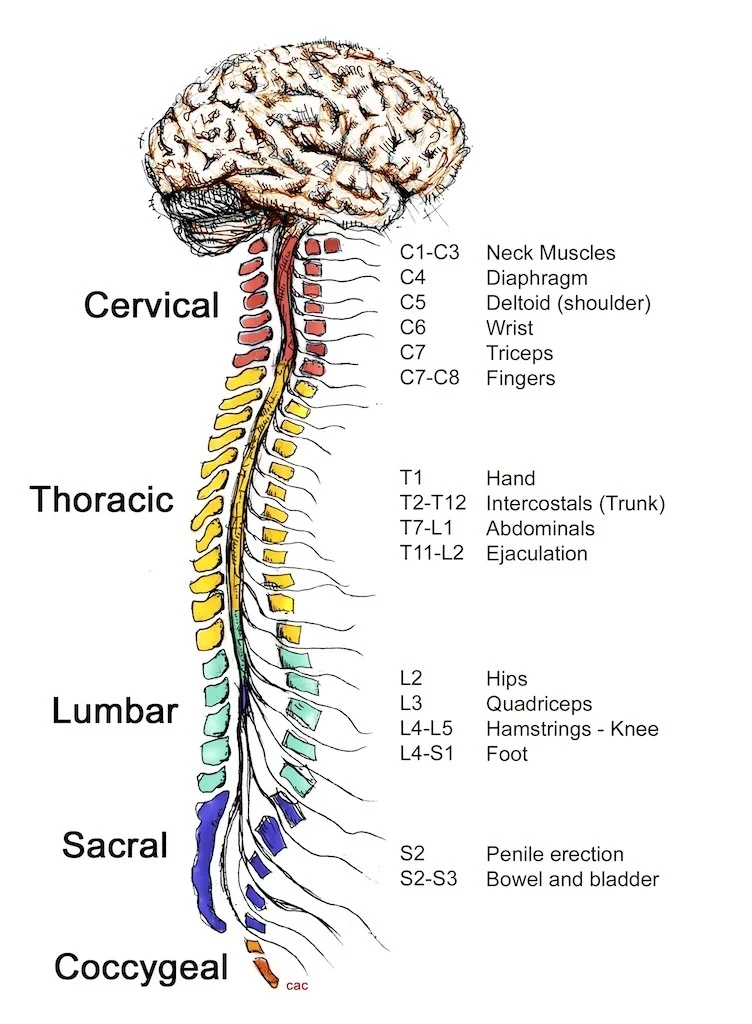


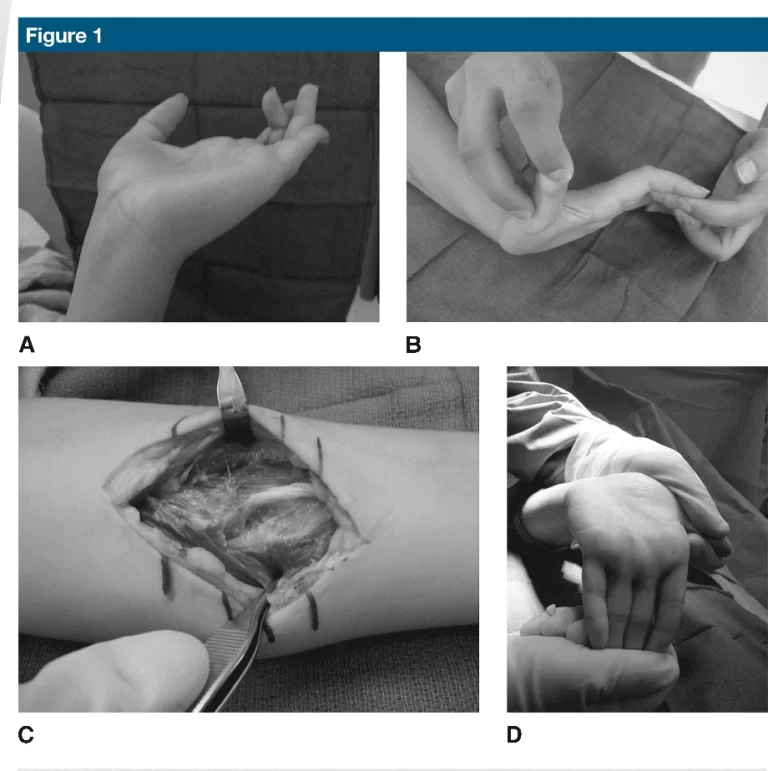
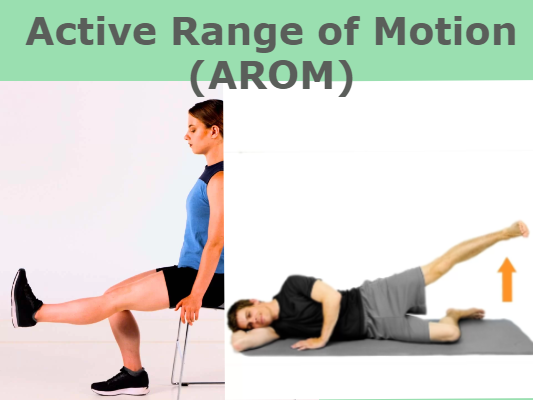
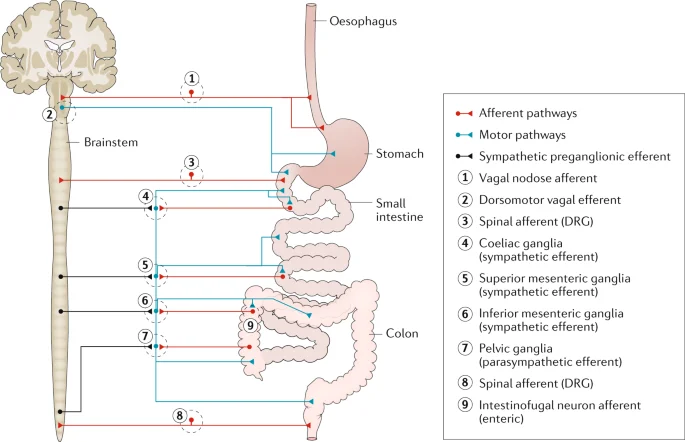
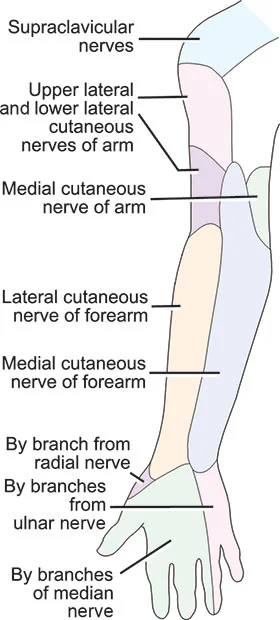
20 Comments